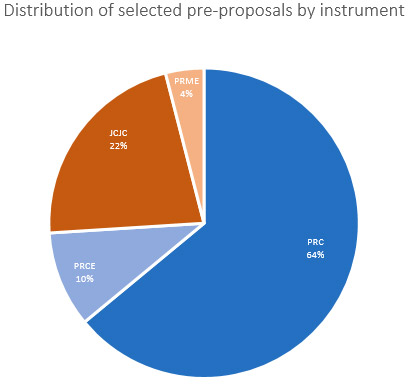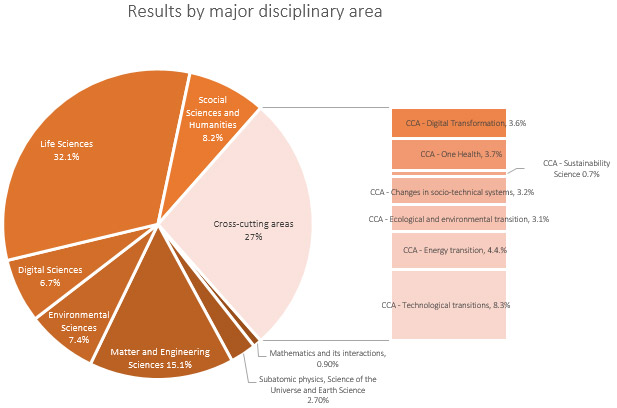AAPG 2022: Results of stage 1 of the ANR’s 2022 Generic Call for Proposals

The results of stage 1 of the AAPG 2022, for the four national funding instruments, are distributed as follows:
- 1,858 PRC (Collaborative Research Projects) pre-proposals selected out of 4,019 eligible pre-proposals submitted, i.e. a selection rate of 46.2%,
- 291 PRCE (Collaborative Research Projects involving Enterprises) pre-proposals selected out of 653 eligible pre-proposals submitted, i.e. a selection rate of 44.6%,
- 118 PRME (Single-team Research Projects) pre-proposals selected out of 330 eligible pre-proposals submitted, i.e. a selection rate of 35.8%,
- 645 JCJC (Young Researchers) pre-proposals selected out of 1,429 eligible pre-proposals submitted, i.e. a selection rate of 45.1%.
2,912 PRC, PRCE, PRME and JCJC pre-proposals out of 6,431 eligible pre-proposals were selected for stage 1 of the AAPG 2022. The selection rate for stage 1 of the AAPG 2021, for the four PRC, PRCE, PRME and JCJC funding instruments, amounts to 45.3% in number of projects.
New AAPG 2022 measure: projects that were ranked in the attached list of the AAPG 2021, but not selected for funding at the end of the financial year, are automatically invited (subject to eligibility) to stage 2 of the AAPG 2022. Thus, 58 additional PRC, PRCE and JCJC projects are invited to submit a full proposal in stage 2. This measure is detailed in page 16 of the AAPG 2022 guide.
International Collaborative Research Projects
In addition, 200 eligible PRCI (International Collaborative Research Projects) projects registered for stage 1, are invited to stage 2 of the AAPG 2022.
In total, 3,170 PRC, PRCE, PRME, JCJC and PRCI projects (including the 58 projects ranked in the attached list of the AAPG 2021) are invited to stage 2 of the AAPG 2022. Selected project coordinators are invited to submit a full proposal in stage 2 of the AAPG 2022 before 24 March 2022, 1:00pm (Paris time).
Results by Scientific Evaluation Panel (CES)
The AAPG selection process is placed under the responsibility of scientific evaluation panels, each corresponding to one of the research themes of the call. The project assessment is carried out upon the criteria detailed in the call text, used both by panel members and external peer reviewers.





